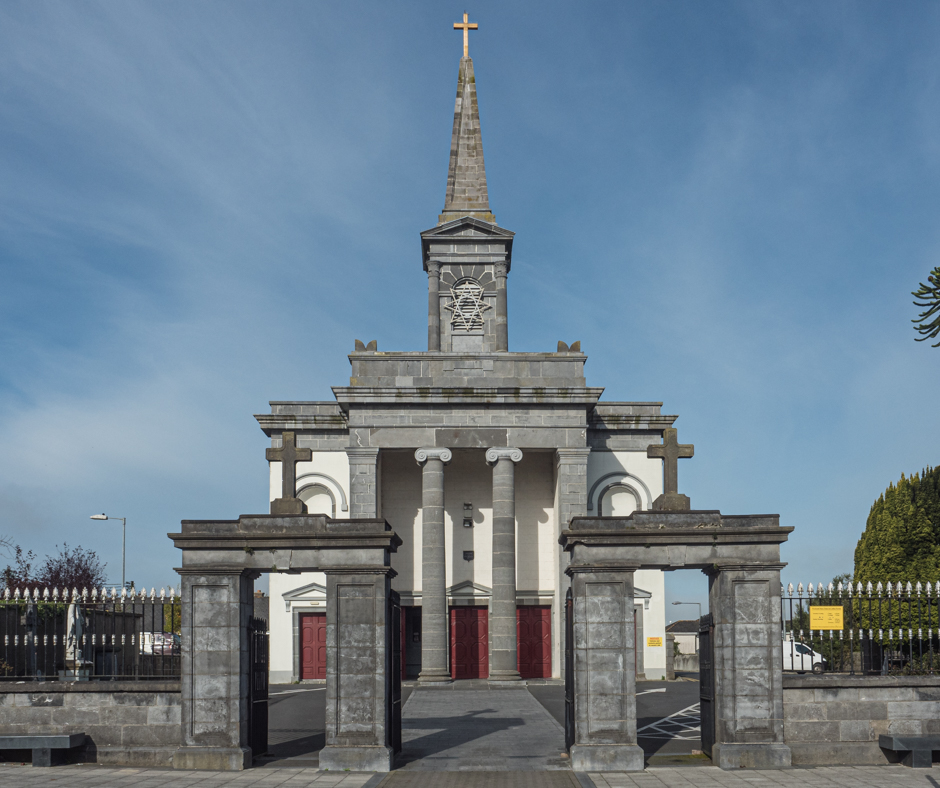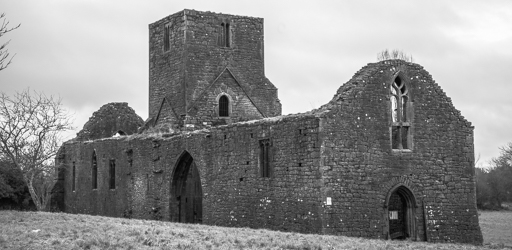“The Big Chapel X”, taking place on the streets of Callan for Kilkenny Arts Week 2019, is loosely based on the award-winning novel “The Big Chapel” by Callan-born Author and Playwright, Thomas Kilroy. Produced by Asylum Productions for the Kilkenny Arts Festival with the support of The Abbey Theatre, it was adapted for theatre by John Morton, Medb Lambert and Donal Gallagher, and is a fictionalised re-telling of The Callan Schism of 1869-1879.
Kilroy based his (also-fictionalised) novel on the notorious clerical conflict between the local Parish Priest, Rev. Robert O’Keeffe and Dr. Edward Walsh, Bishop of Ossory. This dark period in the history of Callan also inspired Francis Mac Manus’ novel “The Greatest of These” in 1942. The late Patrick Hogan of Callan Heritage Society extensively researched these events and compiled a detailed account of the conflict. His work was of great value to some of the other authors who have also written about it.

Robert O’Keeffe was born in Green St. in 1814 to a family who ran a grocery and ironmongery at the Cross. He attended St Kieran’s college, where he was an outstanding student. He was ordained in 1840 and was appointed Professor of Science in Kieran’s. After his teaching career, he served in many parishes before being appointed to his native town in 1863 as Parish priest.
The population of Callan was then around 6,000 (2,330 today) and the poorer classes lived in shocking poverty. He immediately undertook to improve the conditions of the poor, maintaining a special interest in education. As the Christian Brothers had opened a school for boys in West Street in 1868, O’Keeffe decided to invite an order of nuns to provide free education for girls. Having visited many orders, he invited the Sisters of The Sacred Heart from Bezier in France to set up a school in Callan Lodge, as several of their community came from Ossory. At first Bishop Walsh seemed to be favourable to the idea and Fr O’Keeffe went ahead with the arrangements. Bishop Walsh later refused to sanction the coming of a French order however, and thus the conflict began.
Patrick Hogan’s work sets out and explains the events that followed – the removal of the P.P. as manager of the four National Schools and as chaplain of the Workhouse, the suspensions, the lawsuits, the letters to Rome, the intervention of Cardinal Cullen, Archbishop of Dublin, and his nephew Dr Moran who replaced Dr Walsh as bishop of Ossory. The dispute was even raised in the British House of Parliament and gained international notoriety as it pitted canon law versus civil law and resulted in numerous court cases between the clerics.
In Callan where Fr. Robert was very popular with the poorer classes, the community was split, as local people took sides. Fr. O’Keeffe’s supporters were called “Reds” and those of the Bishop were dubbed “The Schismatists”. Faction fighting frequently broke out on the streets aided by an influx from neighbouring areas on weekends. On one occasion a crowd of Bishop supporters removed the slates from the Parish church, damaging the bell, and during another riot, a young boy was killed.
In 1872 a different order of nuns, the Sisters of Mercy, took up residence in Callan Lodge, and the dispute gradually lost its momentum. In 1889 a broken Fr. O’Keeffe retired to live with his niece in Thomastown, having written an apology to his bishop. He died in 1891 and is buried in the family grave in Newtown. The repercussions of the schism were felt for a long time afterwards in Callan.
Patrick Hogan’s work on the Schism was first published by Kilkenny Archaeological Society as an article in “The Old Kilkenny Review” in 1987 and again in “Kilkenny History and Society” in 1990. Phillip Lynch also included it in his publication “The Treasures and the History of the Christian Era”.
Colin Barr, Associate Professor of History in Ave Maria University in Florida has published a very detailed comprehensive account of the schism in his book “The European Culture Wars in Ireland, The Callan Schools Affair” published in 2010.
